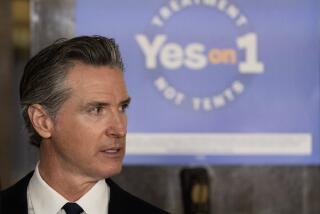The Rising Costs of Mental Health Care
Providing mental health care and substance abuse treatment for workers and their families is likely to be a growing expense for U.S. employers in the 1990s. And the cost is rising even faster than the cost of other types of health care.
In the 1980s, the total workplace cost of mental illness and substance abuse--factoring in treatment, lost productivity, and damaged property--was estimated to be as high as $237 billion a year. The cost of mental health care alone accounted for about 10% of all employer health-care benefit expenses, averaging $207 per employee in 1988.
Employers’ mental health-care costs rose 27% between 1987 and 1988, a period when their overall health-care costs rose 19%, according to a recent report by the Employee Benefit Research Institute. “Employers are finding the cost of an episode of mental health care to be two to three times the cost of an episode of care for other types of ailments,” the report notes.
Another factor in the high cost of mental health care is the cost of providing such treatment for employees’ dependents. The costs for mental health care and substance abuse are often considerably higher for employees’ dependents than they are for the employees themselves.
“This difference is due in part to the screening effect of employment,” says William S. Custer of EBRI. “Individuals who are able to obtain and retain employment are less likely to have serious mental illnesses than others. No such screen exists for employees’ dependents.”
In the near future, employers will likely adopt a variety of measures to manage their mental health-care costs. Some of the changes companies have already made include increasing deductibles, limiting benefits and setting up employee-assistance programs that provide referral services and short-term therapy.
Nonetheless, the number of employees seeking mental health care is likely to grow in the future. While the National Institute of Mental Illness estimates that there are more than 30 million adult Americans who suffer from some sort of mental illness, only one-fifth of these seek any sort of treatment.
School Dropouts Will Run in the Millions
During the 1990s, about 1 million young people will drop out of school each year, according to a new report on America’s education system by futurists Marvin Cetron and Margaret Gayle. The report was excerpted from their book, to be published in December, called “Educational Renaissance: Our Schools Into the 21st Century.” They estimate the cost of the dropouts to be $240 billion in lost earnings and forgone taxes over their lifetimes.
“The number of students at risk of dropping out of school will increase,” Cetron and Gayle say, pointing to both rising academic standards and intensifying social problems such as drug abuse and teen-age pregnancy as reasons for this increase. The result will be a growing number of new work-force entrants who cannot adapt to the rapidly changing requirements and new technologies that will characterize tomorrow’s workplace. Three-quarters of the new work-force entrants in the 1990s will be unqualified for the majority of the new jobs created during that decade.
Few Men Will Take Paternity Leave
If current trends continue, it appears that not very many fathers will be taking paternity leave during the 1990s to raise the next generation. While a growing number of U.S. businesses are offering new fathers the opportunity to take time off for child rearing--the so-called Daddy Track--most men are afraid that taking advantage of such leave time may jeopardize their careers.
A national survey by recruitment firm Robert Half International showed that 31% of all companies in the United States now offer paternity leave. However, only 1.3% of their eligible employees use such leave.
“Officially, more companies are recognizing the need to give both parents the flexibility to attend to their family duties,” concludes Harold Messmer, who is chairman of Robert Half International. “But there is an unspoken concern that taking paternity leave is not going to move one’s career forward. And most working fathers are afraid to take that chance.”
More to Read
Inside the business of entertainment
The Wide Shot brings you news, analysis and insights on everything from streaming wars to production — and what it all means for the future.
You may occasionally receive promotional content from the Los Angeles Times.









